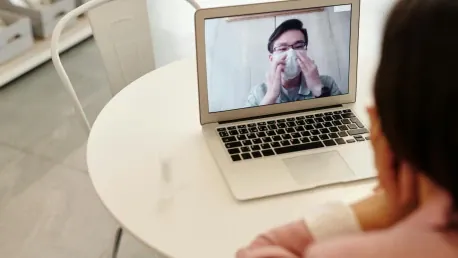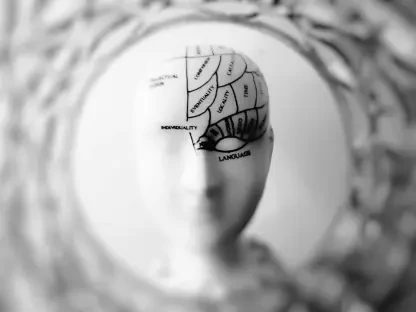The integration of advanced technology within optometry, particularly telehealth and AI-powered solutions, is revolutionizing low vision rehabilitation. These innovations are not only enhancing accessibility and effectiveness in patient care but are also transforming the optometric landscape, ensuring that more patients can receive timely and effective treatment regardless of their location or physical limitations.
The Rise of Telehealth in Optometry
Addressing Accessibility Challenges
Telehealth platforms are extending optometric care beyond traditional examination rooms, significantly benefiting low vision patients who often face transportation difficulties due to their inability to drive. These patients are typically reliant on others to transport them to their appointments, which can pose significant challenges. By providing care through secure video platforms, telehealth circumvents these logistical issues, giving patients the opportunity to receive medical attention from the comfort of their own homes.
The convenience of telehealth cannot be overstated, especially for those who live in rural or underserved areas where specialized care might not be readily accessible. This extension of care ensures that geographical barriers do not impede a patient’s ability to receive continuous and effective treatment. Furthermore, telehealth can bridge the gap for those who are bedridden or have other conditions that make traveling to a clinic particularly challenging. Through secure and efficient video consultations, low vision patients can maintain their health regimens and receive prompt attention to any concerns without the stress of arranging transportation.
Ensuring Proper Use of Assistive Devices
Telehealth appointments play a crucial role in the follow-up care of low vision patients by ensuring that they use their assistive devices correctly. Many patients receive devices such as magnifiers, screen readers, or specialized glasses to aid in their daily lives, but improper use often leads to frustration and eventual abandonment of these helpful tools. Through remote consultations, optometrists can observe how patients use their devices in real-time within their home environments, providing guidance and additional instructions as needed.
This approach is particularly beneficial because it allows healthcare providers to address issues in a timely manner, potentially preventing small problems from becoming significant obstacles. For instance, an optometrist might notice that a patient is not positioning a magnifier correctly, leading to suboptimal results. By offering immediate, corrective feedback, the provider can help the patient achieve the best possible outcomes with their assistive devices. This continuous support fosters a better understanding and more effective use of these technologies, ultimately enhancing the patient’s quality of life and independence.
The Role of AI in Low Vision Rehabilitation
AI-powered Applications
Smartphone and tablet applications enhanced with artificial intelligence (AI) are transforming optometric care by providing innovative solutions to the challenges faced by low vision patients. These applications offer a variety of functions, such as magnifying objects, reading text aloud, recognizing colors, identifying scenes and individuals, and even interpreting emotions. Such multifaceted assistance can significantly improve the daily lives of those with low vision, enabling them to perform tasks that would otherwise be difficult or impossible.
One of the most notable advantages of AI-powered applications is their ability to provide real-time assistance. For instance, an app can use the smartphone camera to read street signs or menus, making navigation and dining out simpler and less stressful for low vision individuals. Additionally, some applications can connect users with sighted volunteers or use AI algorithms to describe the user’s surroundings, thereby enhancing their ability to interact with their environment independently. The versatility and immediacy of these applications offer substantial benefits, making them invaluable tools for those seeking greater autonomy in their daily lives.
Real-time Image Recognition
AI’s role in advancing real-time image recognition software presents another significant leap forward for low vision rehabilitation. These technologies can analyze and describe a user’s surroundings instantaneously, providing crucial information that enhances independence and functionality. For example, an AI-enhanced app might inform a user of nearby obstacles, alert them to approaching traffic, or help them locate specific items on a supermarket shelf. By enabling such real-time interactions with their environment, these applications empower low vision individuals to navigate their daily lives with greater ease and confidence.
The technology behind real-time image recognition is continually evolving, with improvements in accuracy and speed making these systems increasingly reliable. AI-driven advancements ensure that the information provided is both relevant and contextually appropriate, minimizing the potential for errors that could compromise a user’s safety or convenience. Furthermore, ongoing enhancements in machine learning and image processing are expanding the capabilities of these tools, promising even more sophisticated and beneficial features in the future. As these technologies mature, they hold the potential to radically transform the way low vision patients engage with their external world, fostering greater independence and quality of life.
Challenges and Considerations
Privacy and Data Security
Despite the numerous benefits presented by these advanced technologies, issues such as privacy and data security remain paramount concerns. The sensitive nature of patient data necessitates robust measures to ensure its protection, especially when it is being transmitted over telehealth platforms. Maintaining the integrity and security of these video consultations is critical to preserving patient trust and complying with healthcare regulations. Safeguards such as encryption, secure login protocols, and stringent access controls are essential components of a secure telehealth infrastructure.
Moreover, the increase in data generation by AI-powered applications raises additional privacy concerns. Applications that catalog and interpret a user’s surroundings or personal information must adhere to strict privacy standards to prevent unauthorized access and misuse of data. The potential for data breaches or unauthorized data sharing poses significant risks, and developers must be diligent in implementing and updating security measures to mitigate these threats. Transparent privacy policies and informed consent are crucial in fostering trust and ensuring that patients feel confident using these technologies in their healthcare routines.
Accessibility Barriers
While telehealth and AI-powered applications offer immense promise, accessibility barriers still pose a significant challenge to their widespread adoption. Not all patients have access to smartphones or reliable internet connections, which are necessary components for effectively utilizing telehealth services and AI applications. Additionally, there is a learning curve associated with adapting to new technologies, which can be daunting for older adults or those who are not tech-savvy. Addressing these accessibility issues is essential to ensure that all patients, regardless of their technological proficiency or resources, can benefit from these advancements.
Strategies to overcome these barriers could include providing patients with the necessary devices and internet connectivity as part of their care plans, offering training sessions to improve digital literacy, and designing user-friendly interfaces that simplify the use of these technologies. By prioritizing inclusivity and accessibility, healthcare providers and developers can work towards minimizing disparities and ensuring equitable care for all patients. Creating comprehensive support systems that address both technological and educational needs will be key to achieving the full potential of these innovations in optometric care.
The Indispensable Human Element
The Value of In-person Examinations
Despite the remarkable advancements in technology, in-person examinations remain irreplaceable in the field of optometry. The complexity and variability of each patient’s situation necessitate human interaction and personalized care that cannot be fully replicated through digital means. Face-to-face consultations allow optometrists to conduct comprehensive assessments, observe subtle cues, and engage in nuanced conversations that are crucial to understanding and addressing the multifaceted needs of low vision patients.
For example, in-person appointments enable thorough examination of the eyes, which is essential for diagnosing and managing conditions that might not be detectable through a video consultation. Moreover, the ability to physically examine patients and perform precise measurements ensures a deeper level of care and accuracy in prescriptions and recommendations. While technology can supplement these processes, it cannot entirely substitute the holistic approach offered by direct human interaction. Consequently, in-person consultations continue to be a cornerstone of effective and empathetic optometric care.
Empathetic Care and Human Touch
The integration of advanced technologies like telehealth and AI-powered solutions is bringing significant changes to the field of optometry, particularly in the realm of low vision rehabilitation. These cutting-edge innovations are not only making patient care more accessible and effective but are also reshaping the optometric landscape. Telehealth allows patients to receive care remotely, eliminating barriers related to location or mobility issues. AI-powered tools enhance diagnostic accuracy and treatment plans, ensuring timely and precise interventions. This technological revolution ensures that a larger number of patients can benefit from improved vision care, regardless of where they are or their physical constraints. Consequently, the advancements are fostering a more inclusive healthcare environment, where timely, specialized low vision care becomes a reality for many more individuals. This evolution in optometry underscores the importance of integrating technology to enhance patient outcomes and satisfaction, ultimately creating a more robust and resilient healthcare system.









